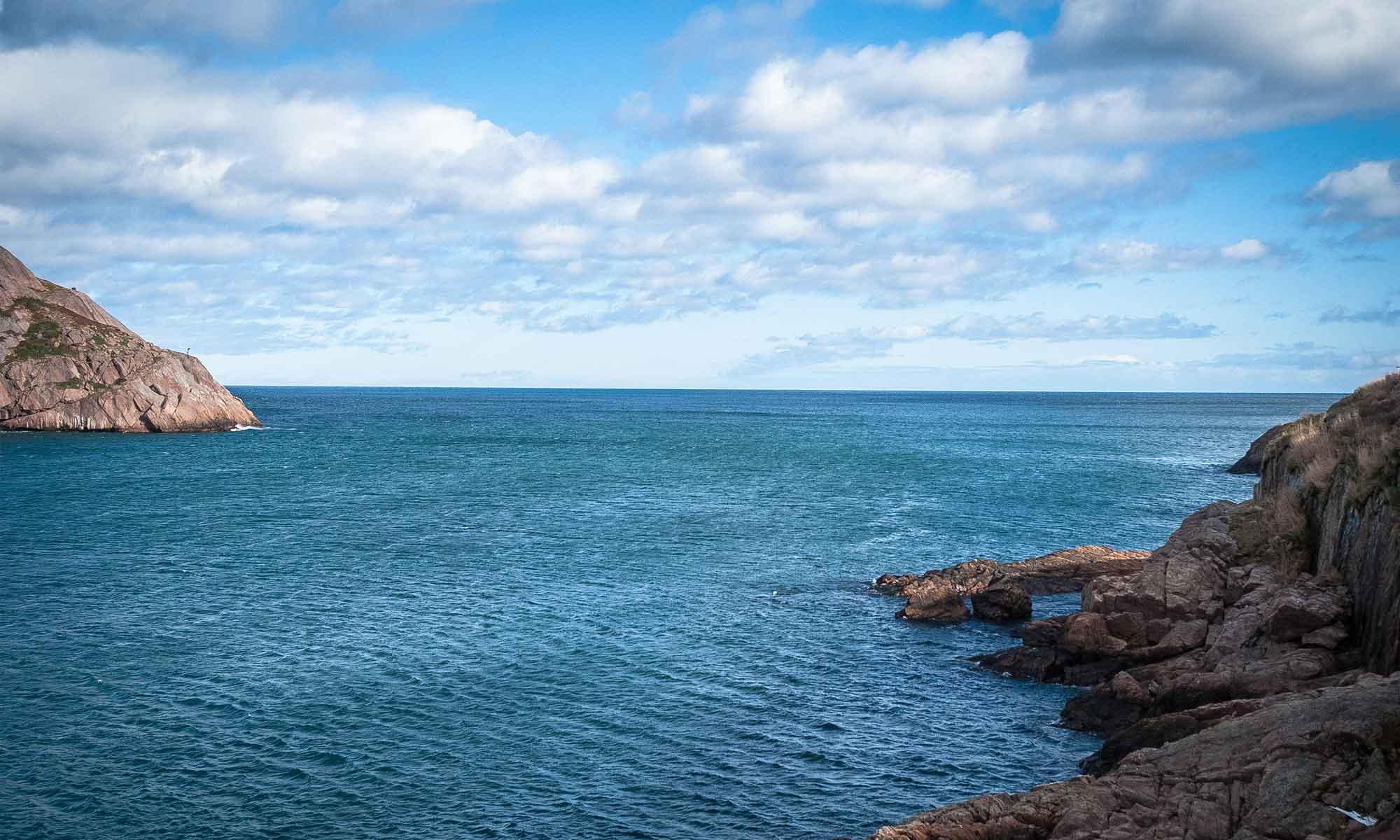The Northmen Leave Their Mark On Newfoundland and Labrador
Picture a sturdy wooden vessel, pointed bow and stern rising sharply from a sweeping sheer, a single mast with square sail, manned by rough bearded seafarers. One word likely springs to mind — Vikings!
A millenium and more ago such ships carried those roving Scandinavians far and wide around the British Isles, Europe, the Mediterranean, Iceland, Greenland, Labrador and Newfoundland. Some of the Norsemen who sailed them — the Vikings — were feared raiders and plunderers. Some were hardy explorers and colonizers who built settlements, first in Iceland, later in Greenland, and eventually on the northern tip of Newfoundland. The latter, at L’Anse aux Meadows, is the only known Norse settlement in North America and the earliest positively identified European structure found to date in the New World. Historians and archaeologists place the age of L’Anse aux Meadows at about a thousand years and, with the turn of the Millenium in the year 2000, the ancient site saw a number of commemorating activities. Some of these featured replicas of the unique Viking ships for, without them, the Norsemen could not have ventured as far as they did to the rugged coastlines of the northwestern Atlantic.
Among the artifacts unearthed at L’Anse aux Meadows are various items related to ships and boats. These craft were the Norsemen’s lifeline back to home colonies in Greenland and Iceland, as well as their means of exploring the North American coast from their tiny base on the tip of Newfoundland. Located in a low-lying bay which faces north across the Straits of Bell Isle to Labrador, L’Anse aux Meadows is believed to have been chosen partly for the ease it offered in hauling vessels ashore for bottom cleaning and repairs. A section of the settlement is thought to have been devoted to shipwrights whose skills were essential to the settlement’s safety and wellbeing.
Viking craft likely evolved from centuries of experience sailing the northern coasts and open ocean. Coupled with the seamanship of their crews, they were superbly suited for their purposes. They were built to be lightweight and flexible, with lapstrake (or clinker) planked hulls that worked in harmony with the water. There were various types of Norse vessels, ranging from the fast longships sailed and rowed by the famous Viking warriors, to the chunkier but handy knarrs which were mainly cargo carriers and probably similar to the ships used to reach Newfoundland and Labrador a thousand years ago.
A replica knarr named Snorri (named after the first recorded European to be born in Newfoundland and probably North America, possibly at L’Anse aux Meadows), pictured above, fulfilled a dream of American adventurer W. Hodding Carter to retrace the route of Norse explorer Leif Eriksson from Greenland to Newfoundland. Carter and crew sailed their 16.5 metre (54-foot) vessel along the province’s northern coast visiting local festivals and meeting the people before participating in Viking Millenium events at L’Anse aux Meadows. Carter donated Snorri to a replica of a Viking-era community called Norstead, two kilometres from L’Anse aux Meadows, where it is now a permanent exhibit.
Another crew headed by a direct descendant of Leif Eriksson built and sailed the longship Islendingur to L’Anse aux Meadows from Iceland, via Greenland and Labrador. They were the lead ship in a Viking 2000 flotilla of about a dozen replica craft from around the world that met in July, 2000, on the southern Labrador coast near present-day Cartwright, an area in the Viking sagas known as “Wonderstrand.” The flotilla sailed down the Labrador coast to L’Anse aux Meadows where a Grand Encampment of over 100 re-enactors revived life in the ancient settlement throughout the summer.
Islendingur is an exact replica of a real Norse longship found in a Viking burial mound in Norway and preserved. She measures 22.5 metres (75 feet) in length, 5.3 m (17.3 ft.) in beam, and has a gross tonnage of 80. Her average sailing speed is about 5 knots, but she does have an engine to get her out of tough spots and help keep to her schedule during the Viking Millenium events.
Parks Canada operates L’Anse aux Meadows as a national historic site and has an intrepretation centre there to explain the significance and details of the site. Close to the remains of the original settlement is a re-creation of some of its features and buildings. At Norstead, just to the east, there are replicas of a church, chieftan’s hall, workshop, boat shed and a number of outdoor items intended to show Norse life a thousand years ago. As many as 40 local people have been hired and trained as permanent seasonal re-enactors employed at Norstead.
The interest in Norse watercraft in the year 2000 wasn’t exclusive to L’Anse aux Meadows. In the capital of St. John’s the Newfoundland and Labrador Museum staged a major exhibit called “Full Circle: First Contact” which highlighted the significance of the Vikings meeting North American aboriginals for the first time a millenium ago. Part of that exhibit was the construction at the Arts and Culture Centre of a faering, a small Norse rowing boat that looks like a miniature longship. The builder was Jerome Canning, a builder of wooden boats in St. John’s.
Since 2015 archaeologists have been investigating what may be evidence of additional Norse occupation on the extreme southwest coast of Newfoundland.
